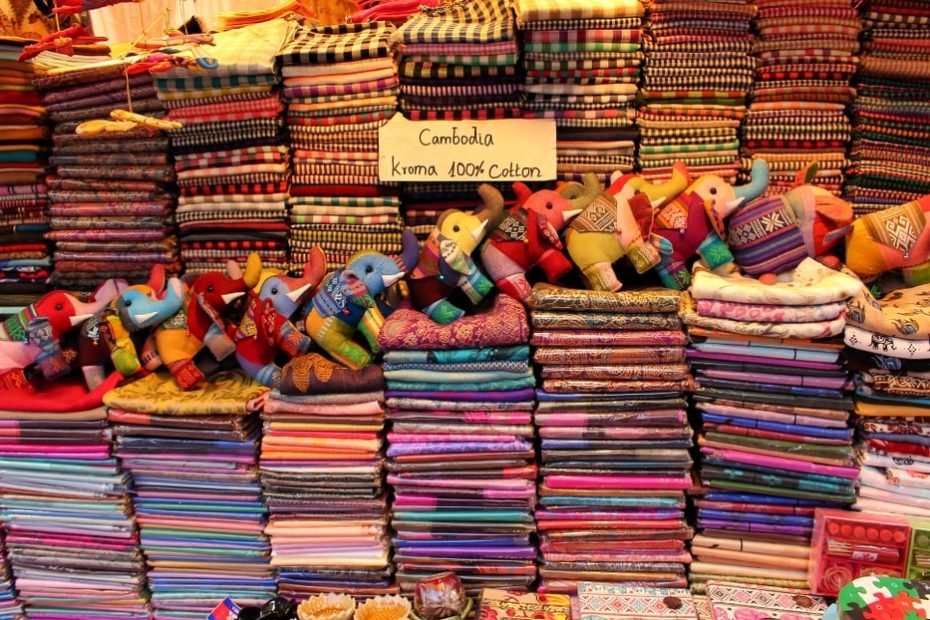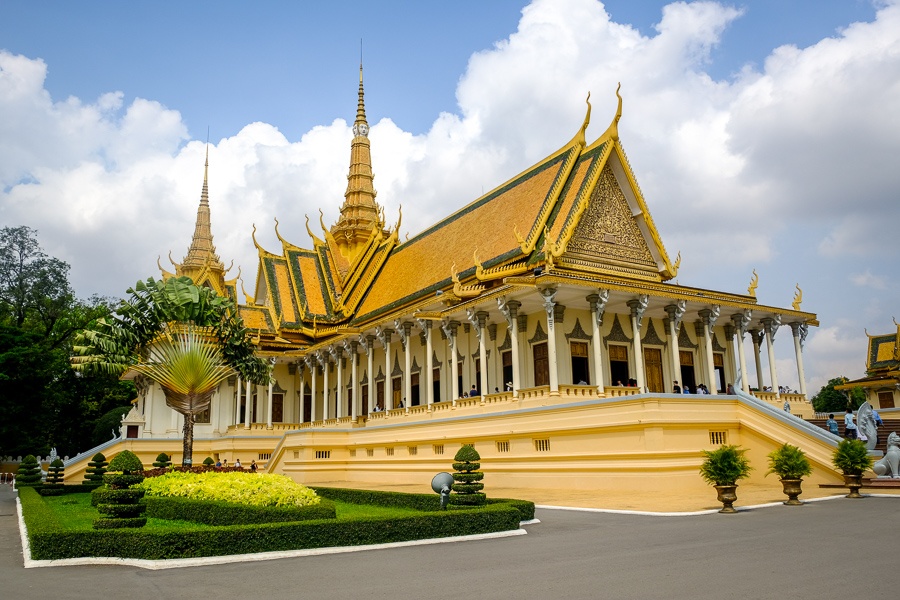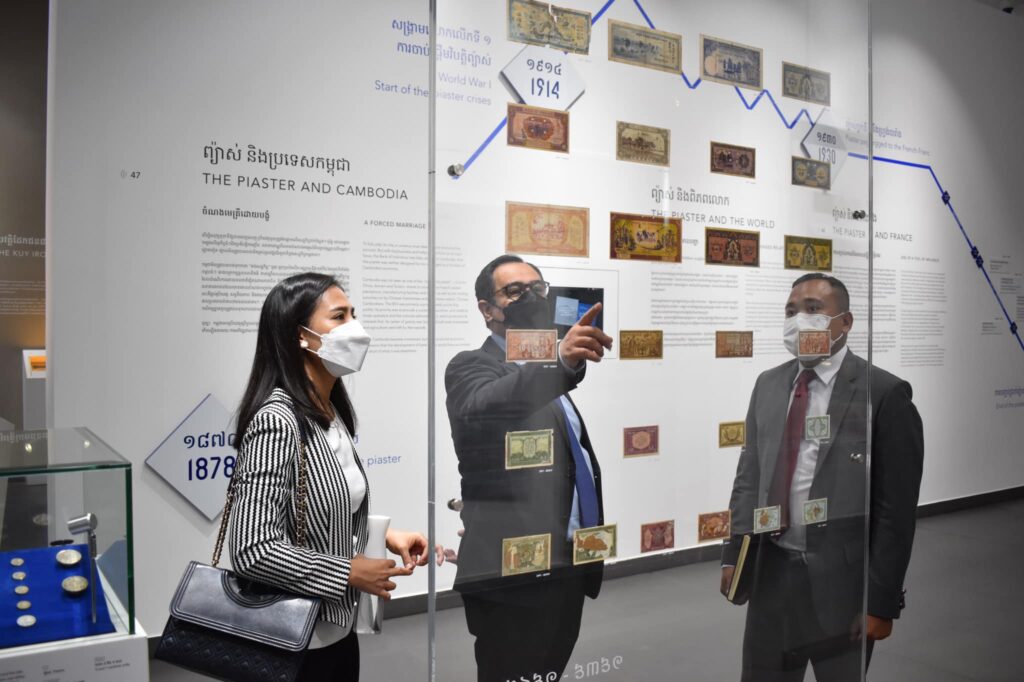As you journey through its vibrant markets, artisan workshops, and charming boutiques, you’ll find yourself immersed in a world of “Crafted Elegance.” This ultimate guide invites you to explore the best things to buy in Cambodia – treasures that encapsulate the nation’s traditions, spirituality, and modern creativity. From intricate handicrafts to tantalizing culinary delights, Cambodia’s offerings beckon the discerning traveler to take home a piece of its unique charm. Let’s embark on a captivating voyage through the labyrinth of shopping opportunities that await.
List of The Best Things to Buy in Cambodia
Cambodia offers a variety of unique products and items that you might consider buying as souvenirs or gifts. Here are some of the best things to buy in Cambodia:
1. Handicrafts and Artifacts:
- Silk Textiles: Cambodian silk production involves traditional weaving techniques passed down through generations. Skilled weavers create intricate patterns and designs using vibrant colors. From scarves to sarongs, silk textiles are not only beautiful but also reflect the rich cultural heritage of Cambodia.
- Handwoven Baskets: Handwoven baskets are often made from natural materials like bamboo and rattan. These baskets come in various shapes and sizes and can be used for both decorative and functional purposes, such as storing items or as home décor.
- Pottery: Cambodian pottery is known for its unique forms and earthy tones. You can find everything from practical items like plates and bowls to decorative vases and sculptures. Each piece carries the artisan’s individual touch and creativity.
- Wood Carvings: Wood carvings in Cambodia often depict scenes from mythology, religion, and everyday life. Intricately carved wooden items, such as figurines, wall panels, and furniture, showcase the exceptional skill of Cambodian artisans.
- Silver Jewelry: Cambodian silverwork is a blend of traditional craftsmanship and contemporary design. Look for delicate silver jewelry adorned with cultural motifs like lotus flowers, Apsara dancers, and ancient symbols.
2. Silk and Textiles:
- Silk Scarves: Cambodian silk scarves are exquisite pieces of art that showcase meticulous attention to detail. They often feature intricate patterns inspired by nature, architecture, and spirituality. These scarves can be worn as accessories or used as decorative items.
- Clothing and Accessories: In addition to scarves, you can find silk clothing items such as dresses, shirts, and pants. These garments not only represent Cambodian fashion but also provide a luxurious and comfortable wearing experience.
3. Silverware
- Jewelry: Cambodian silver jewelry ranges from delicate earrings and pendants to more elaborate necklaces and bracelets. The designs often incorporate traditional Khmer symbols, offering a unique blend of aesthetics and cultural significance.
- Utensils and Décor: Silverware extends beyond jewelry to include utensils like spoons and forks, as well as decorative items like bowls and trays. The intricate designs and patterns make these pieces stand out as both functional and artistic.
4. Stone Carvings:
- Historical Significance: Stone carvings have deep historical roots in Cambodia, with many ancient temples adorned with intricate carvings depicting religious stories and historical events.
- Replicas and Souvenirs: You can find smaller stone carvings that replicate the intricate detailing of larger temple carvings. These replicas can serve as unique mementos of Cambodia’s rich cultural heritage.
5. Krama Scarves:
- Cultural Symbolism: Krama scarves are an integral part of Cambodian culture and are often worn by locals as head coverings, scarves, belts, and more. They symbolize resilience, adaptability, and versatility.
- Functionality: Apart from being fashion accessories, krama scarves have practical uses like protecting the wearer from the sun and dust or providing warmth during cool evenings.
- Variety: Krama scarves come in an array of colors and patterns, each with its own significance. You can choose from traditional designs or modern interpretations to suit your style.
6. Silver and Brass Buddha Statues:
- Spiritual Symbolism: Buddhism plays a significant role in Cambodian society, and Buddha statues hold deep spiritual meaning. Whether you’re a practitioner or not, these statues can be cherished for their symbolism of peace, mindfulness, and spiritual journey.
- Artistic Detailing: The craftsmanship of silver and brass Buddha statues is exquisite, with intricate detailing on the facial expressions, hand positions (mudras), and robes. These details often convey specific teachings and moments from the Buddha’s life.
- Variety: Buddha statues come in various sizes and postures, each representing different aspects of the Buddha’s teachings. From seated and standing to reclining poses, you can choose a statue that resonates with you.
7. Lacquerware:
- Traditional Craftsmanship: Lacquerware production involves layering lacquer onto a base material like wood and then intricately painting or carving designs onto the lacquer surface. The process combines artistic skill with meticulous attention to detail.
- Functional and Decorative: Lacquerware items are not only visually appealing but also functional. Bowls, boxes, trays, and other items can be used for serving food, storing items, or simply as decorative pieces that add elegance to any space.
- Cultural Designs: Look for lacquerware adorned with traditional Cambodian motifs, often inspired by nature, religion, and mythology. These designs reflect the country’s cultural heritage and artistic creativity.
8. Spices and Tea:
- Kampot Pepper: Kampot pepper is a premium spice known for its exceptional quality and unique flavor profile. The pepper is grown in the Kampot region and comes in different varieties, such as black, white, red, and green. Its cultivation is closely tied to the region’s history and culture.
- Herbal and Traditional Teas: Cambodian teas encompass a range of flavors and health benefits. Herbal teas like lemongrass, ginger, and roselle offer refreshing options, providing a taste of Cambodian traditions.
- Culinary and Gifting: Cambodian spices and teas are not only valued for their flavors but also for their potential health benefits. Consider incorporating Kampot pepper into your cooking or gifting a collection of teas as a thoughtful and culturally rich present.
9. Musical Instruments:
- Roneat (Xylophone): The roneat is a traditional Cambodian xylophone composed of wooden bars suspended over a resonator box. Each bar produces a distinct pitch when struck with mallets, creating melodic and rhythmic patterns. The instrument is an essential part of Cambodian classical music and can be a captivating addition to any music enthusiast’s collection.
- Sko (Drum): The Sko is a cylindrical drum that comes in various sizes and is used in traditional Cambodian music and dance performances. Its deep and resonant sound provides a rhythmic foundation for many musical compositions and cultural events.
- Cultural Significance: Traditional Cambodian musical instruments like the Roneat and Sko have been integral to the country’s cultural heritage for centuries. Purchasing these instruments not only supports local artisans but also helps preserve and promote Cambodia’s rich musical traditions.
10. Local Snacks and Food Products:
- Palm Sugar: Cambodian palm sugar is made from the sap of sugar palm trees and is used in various culinary applications. Its distinct flavor adds a touch of authenticity to Cambodian dishes and desserts. You can bring home blocks of palm sugar or palm sugar-based products like candies and syrups.
- Dried Fruits: Cambodia’s tropical climate is ideal for growing a variety of fruits that are often dried for preservation. Look for dried mangoes, bananas, pineapples, and jackfruit, which make for delicious and healthy snacks.
- Fish Sauce (Prahok): While fish sauce might not be for everyone, it’s a staple in Cambodian cuisine and carries a unique flavor that adds depth to dishes. Consider getting a bottle of prahok to experiment with in your own cooking.
- Culinary Exploration: Bringing back Cambodian snacks and food products offers a culinary adventure. It allows you to share the flavors and ingredients of Cambodia with friends and family, as well as incorporate them into your own cooking.
11. Bamboo and Rattan Products:
- Bamboo Furniture: Bamboo’s natural strength and flexibility make it a versatile material for crafting furniture like chairs, tables, and shelves. Bamboo furniture often showcases traditional Cambodian craftsmanship while embracing modern design sensibilities.
- Rattan Baskets: Woven rattan baskets are not only functional for storage and organization but also carry a touch of rustic elegance. They come in various sizes and shapes, suitable for different purposes, from holding fruit to storing personal items.
- Home Décor: Bamboo and rattan products can enhance your home’s aesthetic with their natural textures and earthy tones. From lampshades to plant stands, these items add a touch of warmth and authenticity to your living space.
- Sustainable Choice: Bamboo and rattan are fast-growing and renewable resources, making products crafted from these materials a sustainable choice. Supporting artisans who work with these materials contributes to eco-friendly practices and supports local livelihoods.
Conclusion
As the sun sets on your Cambodian journey, you carry with you more than just memories – you carry a piece of the nation’s soul. “Crafted Elegance” has guided you through the vibrant markets, unveiling the intricate silk textiles, timeless silverware, evocative stone carvings, and versatile krama scarves that are emblematic of Cambodia’s allure.
Your shopping experience has been more than just transactions; it has been a cultural exchange, an appreciation of craftsmanship, and a nod to the artisans who infuse their passion into every creation.
Armed with these exquisite mementos, you not only bring home cherished souvenirs but also a connection to a country where history and innovation intertwine seamlessly. In “Crafted Elegance,” Cambodia’s treasures become your own, as they weave themselves into the fabric of your life’s narrative.



